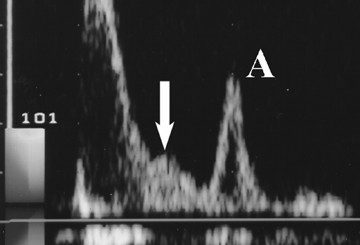Sebaceous glands
Contents1 All of the following are sebaceous glands except2 All are true regarding sebaceous glands...
Glomerular Basement Membrane
Contents1 Which is known as anti-glomerular basement membrane disease2 In Goodpasture’s syndrome damage to the...
Hair follicles
Contents1 All of the following are true of the hair follicles except2 Long eyelashes in...
Nephrology MCQs-4
Contents1 Mature GBM consists of2 Major symptom of ‘Thin Basement Membrane Disease’3 Type IV collagen...
Podocytes
Contents1 Podocytes are highly specialized cells of the2 Podocytes are cells in3 Which cells become...
Gallavardin phenomenon
Contents1 Gallavardin phenomenon is seen in2 In Gallavardin phenomenon selective high-frequency components radiate to the3...
Pulsus parvus et tardus
Contents1 Pulsus parvus et tardus is charactrized by all Except2 What is pulsus parvus et...
Heart failure cells
Contents1 Heart failure cells are2 Siderophage is a hemosiderin-containing macrophage.3 How the Heart Failure cells...
Dust cells
Alveolar Macrophage are called Dust cells Dust cells contain numerous secondary lysosomes and lipid droplets....
Frey syndrome
Contents1 All are TRUE about Frey syndrome EXCEPT2 Gustatory sweating and flushing3 Synkinetic mechanism for...
Oncology MCQs-1
RECIST Criteria for Solid Tumours progressive disease is defined as the appearance of any new lesion or an increase of ------- in the sum of the products of the perpendicular diameters of all measurable lesions
>25% Response Evaluation Criteria In Solid Tumours - RECIST Criteria Progressive disease is defined as the appearance of any new lesion or an increase of >25% in the sum of the products of the perpendicular diameters of all measurable lesions
or an increase of 20% in the sums of the longest diameters by RECIST.
Cancer is the second leading cause of death behind
heart disease
Which of the following is standard way of measuring the ability of cancer patients to perform ordinary tasks?
Standard way of measuring the ability of cancer patients to perform ordinary tasks
Karnofsky performance status
Dukes classification is for
Dukes classification
colorectal cancers
Most significant risk factor for cancer overall is
Most significant risk factor for cancer overall is age; two thirds of all cases were in those aged >65 years
Which of the following tumor is least likely to be disseminated at presentation?
Hematopoietic tumors such as leukemia, myeloma, and lymphoma are often disseminated at presentation and do not spread like solid tumors
Most common cancer
Lung cancer
Calcitonin used diagnostically as a tumor marker for
Patients with calcitonin levels >100 pg/mL have a high risk for medullary thyroid carcinoma (~90%–100%),
Ann Arbor classification is for
Most common cause of cancer death in the world
Lung cancer
"Driver mutations" – are particularly common in adenocarcinomas
Adenocarcinoma
Most common with carcinoma lung
Hypercalcemia
Most common is hypercalcemia caused by over-production of parathyroid hormone-related protein or parathyroid hormone.
Which Adenocarcinoma of lung is most aggressive?
lepidic subtype is associated with good prognosis, acinar and papillary subtypes show intermediate prognosis, whereas micropapillary and solid subtypes correlate with the worst prognosis
Leading cause of cancer death
carcinoma lung
lung cancer is the most diagnosed type of cancer, and the leading cause of cancer death
Which Adenocarcinoma of lung is least aggressive?
lepidic type adenocarcinoma - grow along the alveolar walls
lepidic subtype is associated with good prognosis, acinar and papillary subtypes show intermediate prognosis, whereas micropapillary and solid subtypes correlate with the worst prognosis
CK7 is present in many lung cancers, but absent from
squamous cell carcinomas.
Adenocarcinomas tend to express Napsin-A and TTF-1; squamous cell carcinomas lack Napsin-A and TTF-1, but express p63 and its cancer-specific isoform p40
Most common symptom of carcinoma lungs
Cough
Small cell lung cancer are most commonly found near
center of the lung
SCLC tumors are often found near the center of the lungs, in the major airways
Which of the following tumor develops hollow cavity and associated cell death at the center of the tumor?
Squamous-cell carcinoma
Squamous-cell carcinoma causes about 30% of lung cancers. Occur close to large airways. Hollow cavity commonly found at the center of the tumor.
Horner's syndrome is common in lung tumors at
Apex
Horner's syndrome - seen in Pancoast tumor which is a tumor of the apex of the lung.
Pathology Flash Cards-1
Which is the most frequent malignancy in individuals exposed to asbestos
Commonest type of carcinoma lungs
• Squamous cell carcinoma (20%)
• Small cell carcinoma (14%)
• Large cell carcinoma (3%)
• Other (25%)
Most frequently diagnosed major cancer in the world
Which type of lung carcinoma shows the strongest association with smoking?
Which type of peripheral neuropathy occurs in carcinoma lungs?
Lung cancers % in active smokers or those who stopped recently
Most common cause of cancer mortality worldwide
Pancoast tumors
Severe pain in the distribution of the ulnar nerve
Horner syndrome (enophthalmos, ptosis, miosis, and anhidrosis) on the same side as the lesion
Carcinoma lungs in women and nonsmokers
Lung Cancer in Never Smokers.
Share:
Image Question-31
What is the Diagnosis of Image? Image Question-31 What is the Diagnosis of MRI Image?…
Anatomy of Skin
Epidermis has ——- layers where the skin is thick A. four B. five C. six…
Skin and subcutaneous tissue
All are true regarding epidermis except A. Keratinocytes replaced via mitoses in the cells of…
Neuroanatomy Flash Cards-2
Schirmer's test
What happens to Kayser–Fleischer rings after treatment?
What is the pathophysiology of Kayser–Fleischer rings ?
Filum terminale
Sunflower cataract
Sunflower cataract and KF rings.
Krückmann-Wolfflin bodies
Similar spots seen in iris like Brushfield spots Found in individuals without Down syndrome.
Krückmann-Wolfflin bodies- these spots typically are less well defined, fewer in number and more peripherally located than the Brushfield spots of trisomy 21.
Brushfield spots
Kayser–Fleischer (KF) rings
Lisch nodules
Rarely seen in individuals without NF1 like segmental neurofibromatosis and Watson syndrome.
Dentate ligament
Is Kayser–Fleischer rings is specific to Wilson disease ?
Kayser–Fleischer rings and impairment of vision
Share:
Hingorani sign
Hingorani sign is useful to differentiate which of the following condition in pregnancy: A. Tubal…
Bands of Ladd
Ladd’s bands What is ‘Bands of Ladd’? Fibrous stalks of peritoneal tissue that attach the…
Ultrasound in Early Pregnancy
Transvaginal ultrasound is —————– to transabdominal ultrasound for early pregnancy evaluation A. Superior B. Inferior…
Placenta Previa
Major complication of placenta previa is A. Postpartum hemorrhageB. Requires the delivery by cesarean deliveryC….
Neuroanatomy Flash Cards-1
What is the 'motor strip' called?
Precentral gyrus
Pyramidal cells are found in which areas of the brain ?
Which cells are the primary excitation units of the prefrontal cortex and the corticospinal tract?
What is Broca's area ?
What is Sylvian fissure?
What is the 'sensory strip'?
Brodmann area ------------ refers to the primary motor cortex of the human brain.
What are the names of principal gyri of frontal lobe?
Broca's area is present in which location?
Broca's area is not present in both hemispheres. Instead, it is within the inferior frontal gyrus of the dominant hemisphere.
The dominant hemisphere, in most individuals, is the left hemisphere. Therefore, Broca's area is most commonly present in the left inferior frontal gyrus.
Share:
Chronic kidney disease in pregnancy
Symptoms are unusual in chronic kidney disease in pregnancy until the glomerular filtration rate declines…
Hypertensive Disorders in Pregnancy
All are true of Chronic Hypertension in pregnancy except A. Diagnosed within the first 20…
Coumadin Ridge
Coumadin RidgeCoumadin ridge, also known as a warfarin ridge or left lateral ridge “Q-tip sign”…





